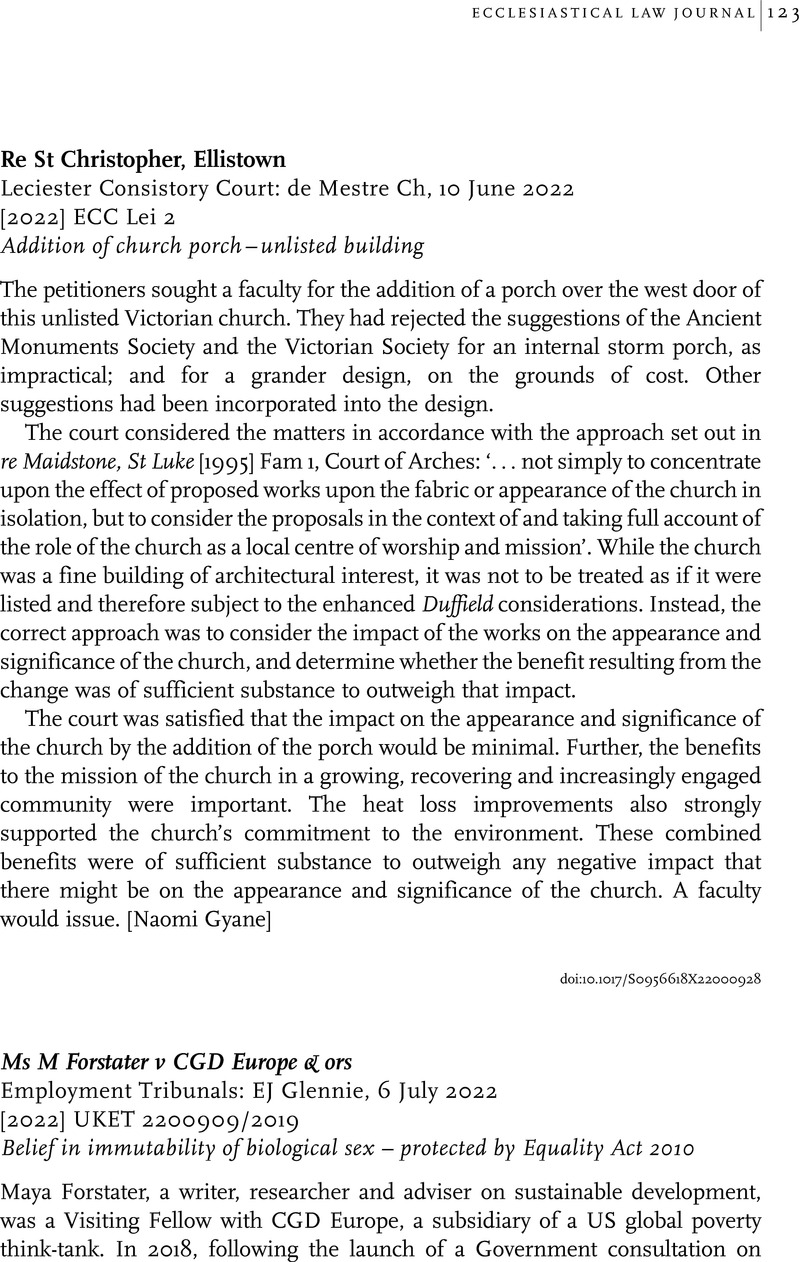No CrossRef data available.
Article contents
Re St Christopher, Ellistown
Leciester Consistory Court: de Mestre Ch, 10 June 2022 [2022] ECC Lei 2 Addition of church porch – unlisted building
Published online by Cambridge University Press: 05 January 2023
Abstract
An abstract is not available for this content so a preview has been provided. Please use the Get access link above for information on how to access this content.

- Type
- Case Notes
- Information
- Copyright
- Copyright © Ecclesiastical Law Society 2023



